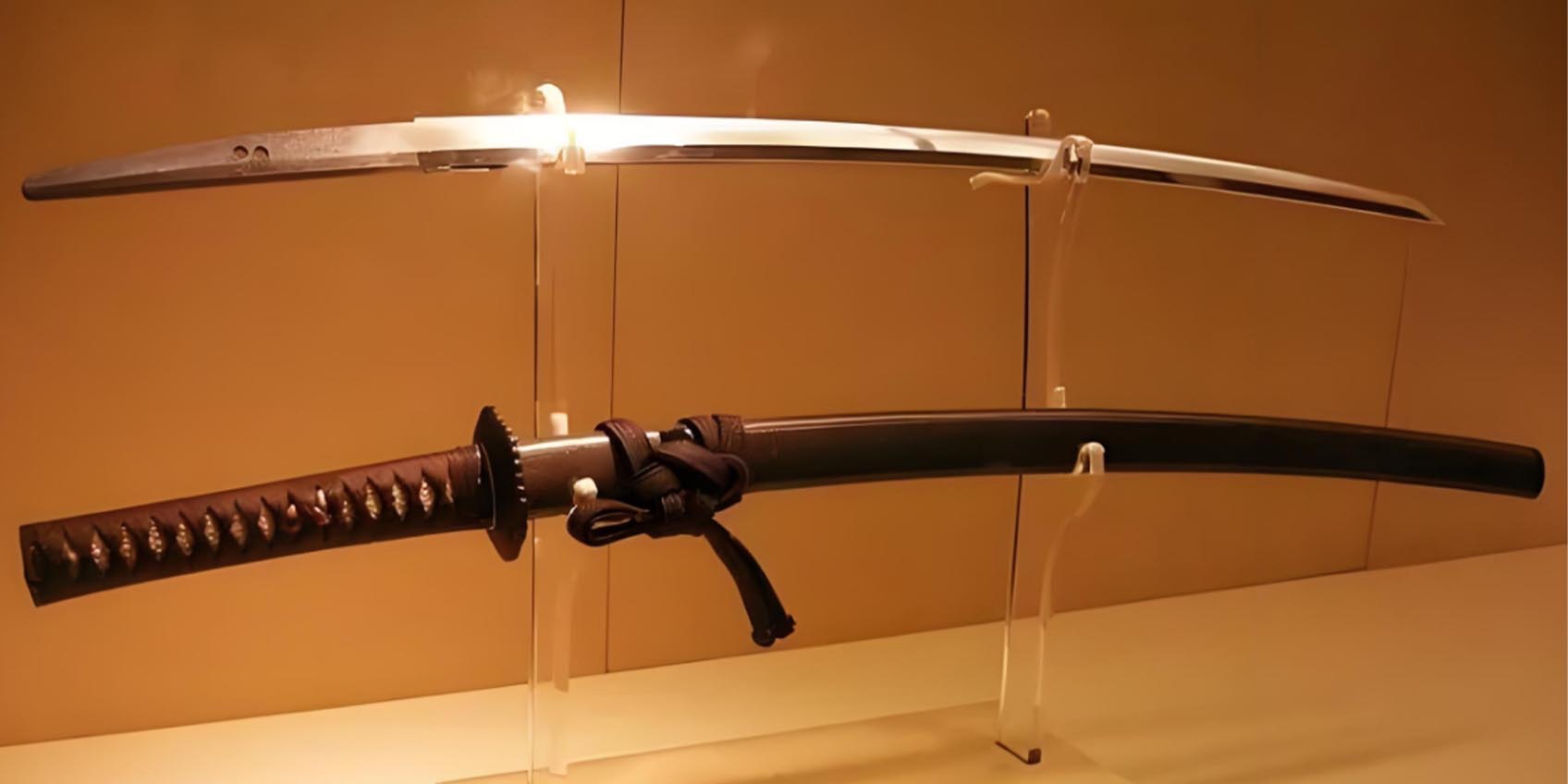Comprehensive Guide: The History, Craftsmanship, and Two-Handed Use of the Tachi Swor

Katana vs Tachi: A Quick Comparison
The tachi and katana are both iconic Japanese swords, but they differ in design, use, and historical context. The tachi is longer (70-80 cm) with a more pronounced curve and was worn edge-down, designed for mounted samurai during the Heian period. It was ideal for slashing in cavalry combat. In contrast, the katana is shorter (60-80 cm), with a more subtle curve, worn edge-up for quick drawing and close combat, becoming popular in the Kamakura period. The katana was made for precision and duels, symbolizing the samurai's honor in the Muromachi and Edo periods. Essentially, the katana evolved from the tachi, refining swordsmanship for different combat styles and historical eras.
From ancient battlefields to displays near Central California’s Tachi Palace Casino Resort, the tachi sword’s legacy of craftsmanship and two-handed power lives on.
The Tachi is a revered traditional Japanese sword known for its rich history and craftsmanship. This article explores the legendary Tachi, its unique characteristics, manufacturing process, and practical use.
The Tachi, a symbol of feudal Japan, is a curved sword that first appeared during the Heian period and evolved into a weapon of both artistry and deadly precision. Unlike the katana, the Tachi was worn with its edge facing outward in a style known as tachi koshirae, making it particularly effective for mounted combat. This orientation allowed samurai to draw the blade swiftly and deliver devastating strikes with its single-edged blade and razor-sharp cutting edge.
During the Muromachi period, as warfare intensified, swords designated as Tachi underwent significant changes to meet the needs of evolving battle tactics. The Mongol invasions of Japan were a turning point, prompting Japanese swordsmiths to innovate, creating stronger and more resilient blades capable of piercing the heavy armor of invaders. The longer and more elegant design of the Tachi, combined with its balance and craftsmanship, made it a favored weapon among mounted warriors.
While the Tachi eventually gave way to the katana as the preferred weapon of samurai, its legacy as an exceptional curved sword endures. The craftsmanship of Japanese swordsmiths, who perfected techniques to create the Tachi's distinct shape and functionality, remains a testament to the weapon's role in shaping the martial and cultural history of feudal Japan.
The Legend of the Tachi
The Tachi is a classic Japanese weapon with significant curvature, typically measuring between 3 shaku and 5 shaku in length. Smaller versions are known as Ko-tachi , and larger ones are called O-tachi or Yatachi. The term ‘Tachi' is believed to originate from the Japanese word for 'cut' ('tachi'), although archaeological findings and historical records suggest that the pronunciation varied in early times. The Tachi evolved from the Chinese Han Dynasty ring-pommel sword, showcasing its deep historical roots.
Manufacturing Process: Five Stages of Creation
- Initial Smelting: Mix iron sand with quartz powder and charcoal powder, then heat it in a foot-operated bellows furnace for three days and nights. The iron sand transforms into a semi-molten paste, which is then cooled and solidified into bar-shaped pig iron.
- Refinement: Crush the pig iron bars, mix in more quartz and charcoal powder, and reheat to smelt. This process produces Tamahagane, a high-carbon steel.
- Soft Steel Formation: Through repeated quenching and refining, Tamahagane is converted into soft steel, providing the necessary elasticity and toughness for the sword core.
- Hardened Blade: The soft steel core is wrapped with a layer of harder Tamahagane (called 'Kawa-ite'), and the spine of the blade is covered with high-carbon Tamahagane (called 'Mune-ite'). Further quenching and refining complete the blade’s preliminary shape.
- Clay Quenching: The blade is subjected to clay quenching to achieve a sharp and hard edge.
The completed Tachi sword reflects the craftsmanship and meticulous effort of the swordsmith.
Structural Characteristics
The Tachi differs from other swords such as the Katana, particularly in its scabbard, which features two metal rings (known as 'Kozuka') bound with a ribbon for easier carrying. The scabbard’s head is wrapped in metal (called 'Ishi-dashi'), and a metal piece at the scabbard’s mouth (called 'Kuchi-kiri') must be pressed down when drawing the sword. Early Tachi were primarily used by cavalry, highlighting the strength and skill of the samurai. The curved blade design made slashing more effective, inheriting the curved shape of earlier Kozuka-type Tachi.
Techniques for Using the Tachi
Proper grip is crucial when using the Tachi. The hand should not have gaps; the ring and little fingers should tightly grip the handle, while the thumb and index finger lightly hold it, with the middle finger resting naturally.
During attacks, the grip should remain unchanged, avoiding any shaking or hesitation. The grip only needs slight adjustments during attacks, blocking, or suppressing the opponent’s blade, but the goal should always be to defeat the opponent.
Mastering the Tachi requires flexible control, avoiding fixed or rapid swinging. Quick swings are akin to fan motions and are unsuitable for the Tachi. The correct method involves smooth, powerful movements. Quick swing techniques, known as 'Sokuto', are not suitable for striking enemies with the Tachi, which should be used with fluid and strong actions.
Why Samurai Stopped Using the Tachi
The decline of the Tachi was primarily due to changes in combat methods. Key factors include:
- Changes in Combat Methods: During the Sengoku period (1467–1603), combat shifted from cavalry to infantry. The Tachi’s design became less suitable for the new demands of infantry combat, which required faster, more agile weapons.
- Rise of the Katana: The Katana emerged during the Kamakura period (1185–1333) and became the dominant weapon in the Sengoku period. The Katana was more suited to infantry combat due to its design, which facilitated quick drawing and rapid attacks.
- Design Limitations: The Tachi, with its blade hanging down, was ideal for horseback strikes but less effective and flexible in infantry combat compared to the Katana.
Conclusion
The Tachi is more than just a weapon; it symbolizes the tradition and art of the Japanese samurai. Its intricate manufacturing process, unique design, and usage techniques highlight the skill and dedication of the swordsmiths. For enthusiasts and collectors, understanding the history and craftsmanship of the Tachi enhances the appreciation of Japanese sword culture. Explore the world of the Tachi and experience the rich heritage of this legendary sword.
Japanese Tachi Sword – Full Tang Blade with Dragon Pattern Accessories
For sword enthusiasts and collectors, CoolKatana presents the handmade Japanese Tachi Sword. Crafted from 1045 carbon steel, this sword features a full tang blade and exquisite dragon pattern accessories, showcasing superior craftsmanship and durability. As a combat katana, it faithfully replicates traditional Tachi designs while incorporating modern techniques, reflecting the art of sword designs and craftsmanship.
Whether you seek a genuine real katana or wish to explore the design of sword components (parts of swords), this Tachi sword series meets your needs. Made from 1045 carbon steel, the blade is hard and durable, and customization options are available to create a unique Custom Sword. Each detail, from the handle of a sword to the sword pommel, is meticulously designed to cater to collectors and enthusiasts demanding a realistic katana.
This handmade Japanese Tachi Sword is not only an ideal choice for sword lovers but also a must-have for anime swords collectors. For those with a special interest in sword names and traditional Tachi (katana man), this sword demonstrates a profound understanding of parts katana and exceptional designing swords craftsmanship. If you’re a fan of handmade swords, this Tachi sword will undoubtedly be a treasured addition to your collection.
The katana was worn by samurai warriors during the Edo period, a time when the art of swordsmanship reached its peak. Unlike the katana, which was worn with the edge facing up, the tachi sword was traditionally worn suspended edge-down, allowing samurai to draw it quickly for close combat. This design made the tachi ideal for mounted warriors, as it could be easily drawn while riding.
The craftsmanship of the tachi is a testament to the skill of Japanese swordsmiths. During the Edo period, smiths refined their techniques to create blades that were not only functional but also works of art, incorporating intricate hamon (temper lines) and distinct curvature. These swords were often longer than katana, giving them greater reach in battle.
The two-handed use of the tachi required a masterful balance of strength and precision. Unlike one-handed swords, the tachi allowed for powerful, sweeping strikes, making it highly effective in both offense and defense. Its size and weight demanded a high level of expertise, and it became a symbol of the samurai’s status and fighting prowess.
Handmade Japanese Tachi Sword, 1045 Carbon Steel Full Tang Blade Dragon Pattern Accessories
At some events, fans demonstrate their swordsmanship skills, paying tribute to anime's legendary battles. Conventions even hold swordsmanship competitions, letting enthusiasts showcase their passion and creativity with these iconic weapons. Certain anime weapons hold special significance for fans, influencing anime swordsmanship and sparking interest in related merchandise. Celebrations at various anime events further boost their popularity. These weapons symbolize strength and courage, leaving a lasting mark on the anime world.




